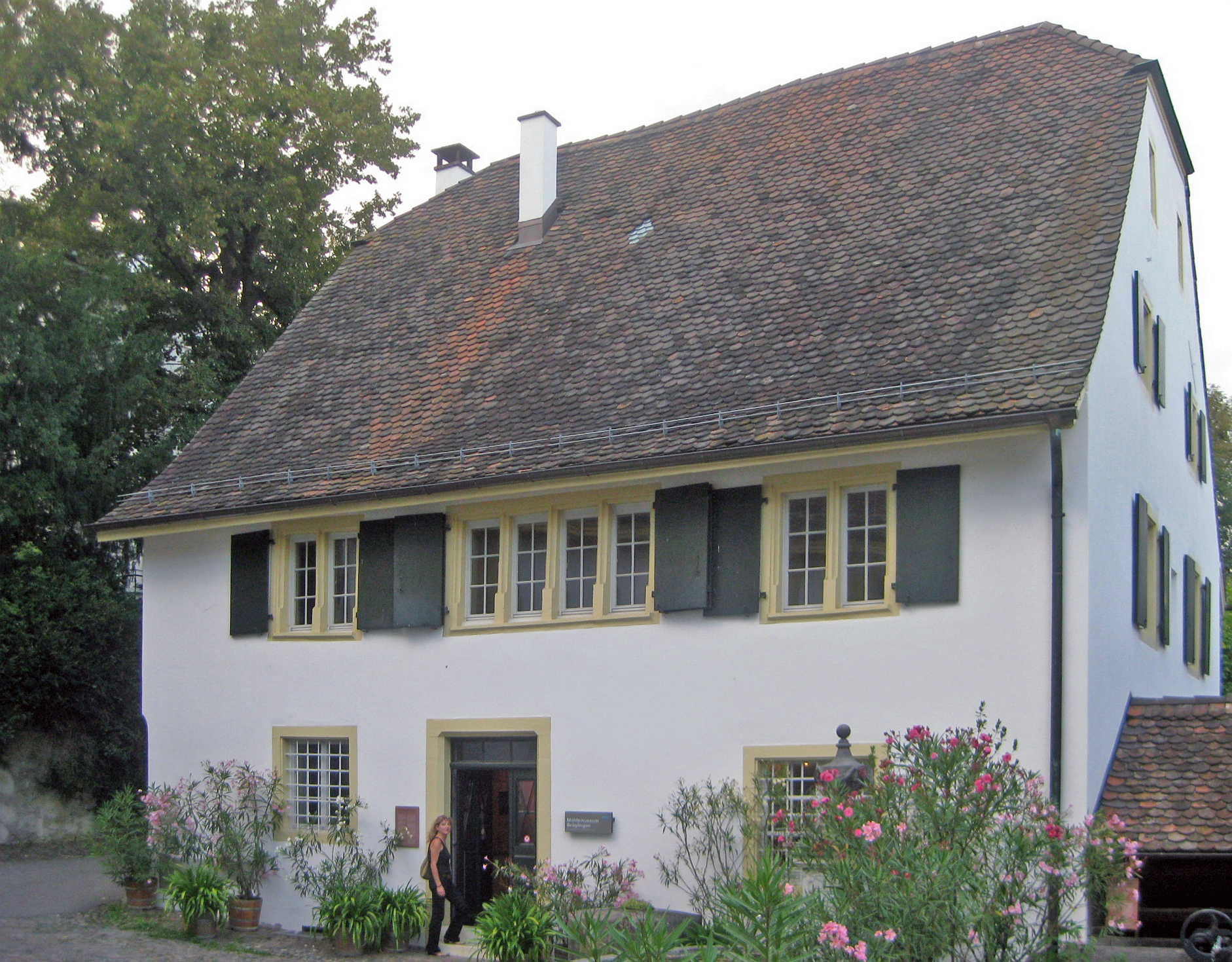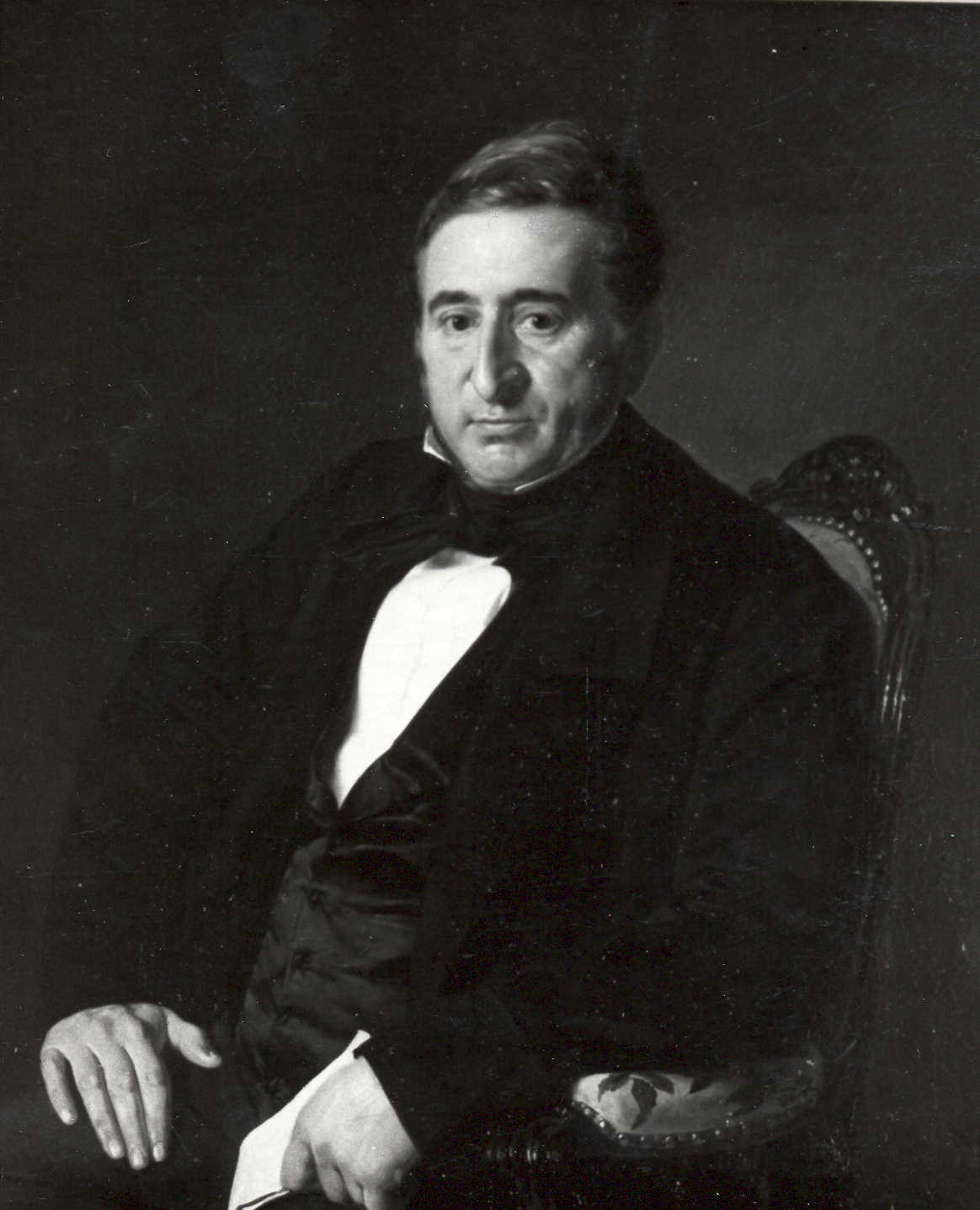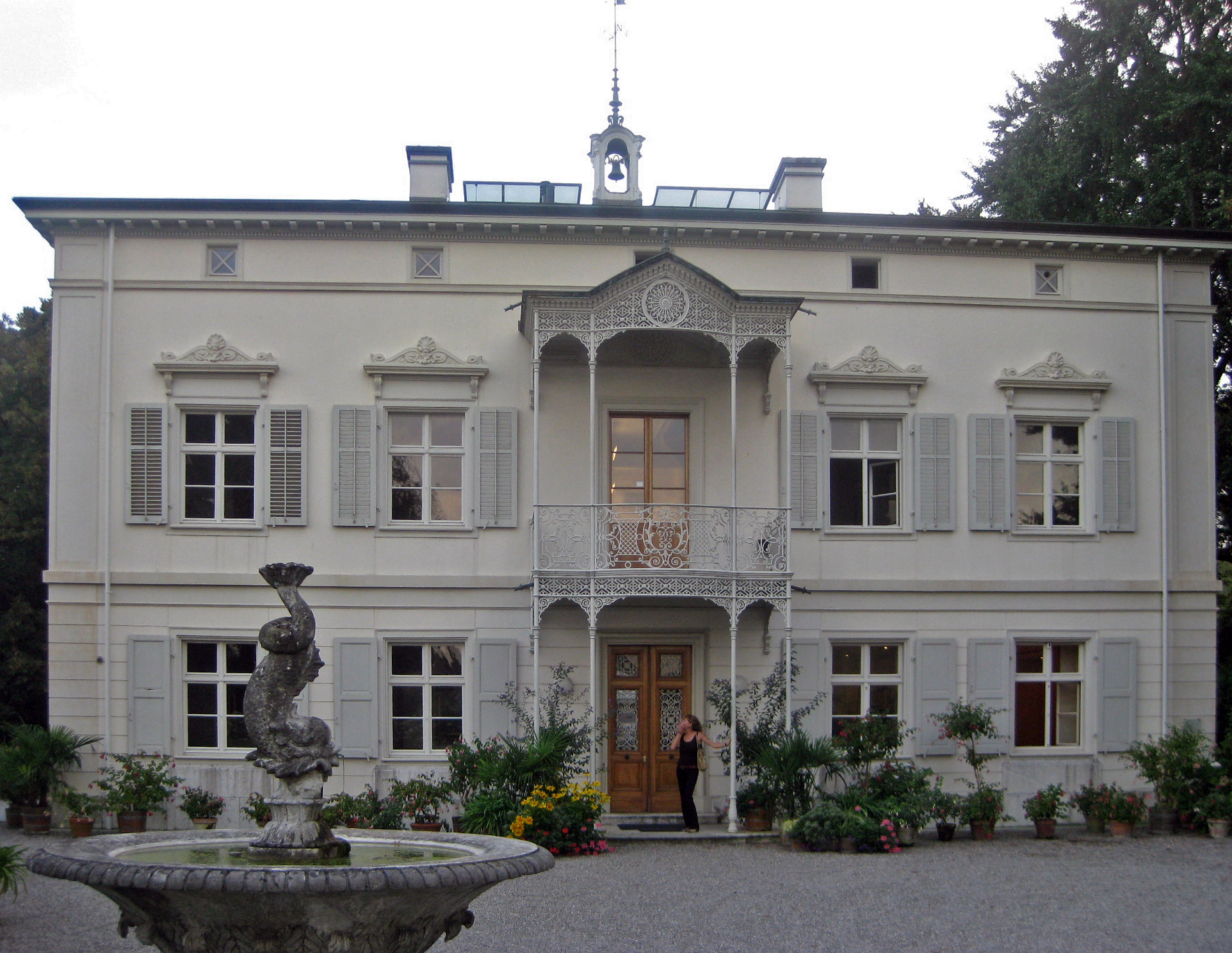|
Watermill Museum Brüglingen
The Watermill Museum Brüglingen (Mühlemuseum Brüglingen) is housed within the former watermill and stands in the lower plain of Brüglingen, in the sub-district ''" Neue Welt"'', Münchenstein, in the canton of Basel-Country in Switzerland. Geographical location The geographical area Brüglingen is a plain region that lies along the western bank of the river Birs between ''St. Jacob an der Birs'' (now part of Basel) and Münchenstein. The region called ''"Neue Welt"'' (the new world) evolved as the industry started to establish itself around the upper end of the "St. Alban-Teich", an artificial canal constructed during the 12th century to bring water and water power to the industry in Basel. The late Gothic mill is situated directly below the Villa Merian and its English Garden. The Villa stands upon the elevated area above the Brüglinger plain. History The hamlet and the mill between ''"Neue Welt"'' and ''St. Jakob an der Birs'' are mentioned in a deed in 1259 as being ... [...More Info...] [...Related Items...] OR: [Wikipedia] [Google] [Baidu] |
Gothic Architecture
Gothic architecture (or pointed architecture) is an architectural style that was prevalent in Europe from the late 12th to the 16th century, during the High and Late Middle Ages, surviving into the 17th and 18th centuries in some areas. It evolved from Romanesque architecture and was succeeded by Renaissance architecture. It originated in the Île-de-France and Picardy regions of northern France. The style at the time was sometimes known as ''opus Francigenum'' (lit. French work); the term ''Gothic'' was first applied contemptuously during the later Renaissance, by those ambitious to revive the architecture of classical antiquity. The defining design element of Gothic architecture is the pointed or ogival arch. The use of the pointed arch in turn led to the development of the pointed rib vault and flying buttresses, combined with elaborate tracery and stained glass windows. At the Abbey of Saint-Denis, near Paris, the choir was reconstructed between 1140 and 1144, draw ... [...More Info...] [...Related Items...] OR: [Wikipedia] [Google] [Baidu] |
Mill Museums In Switzerland
Mill may refer to: Science and technology * * Mill (grinding) * Milling (machining) * Millwork * Textile mill * Steel mill, a factory for the manufacture of steel * List of types of mill * Mill, the arithmetic unit of the Analytical Engine early computer People * Andy Mill (born 1953), American skier * Frank Mill (born 1958), German footballer * Harriet Taylor Mill (1807–1858), British philosopher and women's rights advocate * Henry Mill (c. 1683–1771), English inventor who patented the first typewriter * James Mill (1773–1836), Scottish historian, economist and philosopher * John Mill (theologian) (c. 1645–1707), English theologian and author of ''Novum Testamentum Graecum'' * John Stuart Mill (1806–1873), British philosopher and political economist, son of James Mill * Meek Mill, Robert Rihmeek Williams (born 1987), American rapper and songwriter Places * Mill en Sint Hubert, a Dutch municipality * Mill, Netherlands, a Dutch village * Mill, Missouri, a communi ... [...More Info...] [...Related Items...] OR: [Wikipedia] [Google] [Baidu] |
Christoph Merian Stiftung
Christoph Merian (22 January 1800 – 22 August 1858) was a banker and businessman. He was the owner of a large estate, agriculturist and rentier. He was one of the richest Swiss men of that time. He was an honorary citizen of Münchenstein (1854) and the canton of Basel-Country (1855) and the founder of the Christoph Merian Stiftung. Early life and education Christoph Merian was born on the 22 January 1800 in the “House to the Green Ring“ in Basel as the son of Christoph Merian senior and Valeria Hoffmann. Christoph Merian was educated in Basel. At the age of five years, his education began. He attended the private boy school of Johann Heinrich Munzinger from 1805 until 1808, the year when he entered the Gymnasium "Zur Burg". In 1811 his father bought the estate in Brüglingen, Münchenstein where the family would spend the summertime. In 1815 the family settled in Mannheim and by 1816 he began his apprenticeship as a merchant. In 1818, he began an education as an agronomi ... [...More Info...] [...Related Items...] OR: [Wikipedia] [Google] [Baidu] |
Christoph Merian
Christoph Merian (22 January 1800 – 22 August 1858) was a banker and businessman. He was the owner of a large estate, agriculturist and rentier. He was one of the richest Swiss men of that time. He was an honorary citizen of Münchenstein (1854) and the canton of Basel-Country (1855) and the founder of the Christoph Merian Stiftung. Early life and education Christoph Merian was born on the 22 January 1800 in the “House to the Green Ring“ in Basel as the son of Christoph Merian senior and Valeria Hoffmann. Christoph Merian was educated in Basel. At the age of five years, his education began. He attended the private boy school of Johann Heinrich Munzinger from 1805 until 1808, the year when he entered the Gymnasium "Zur Burg". In 1811 his father bought the estate in Brüglingen, Münchenstein where the family would spend the summertime. In 1815 the family settled in Mannheim and by 1816 he began his apprenticeship as a merchant. In 1818, he began an education as an agronomi ... [...More Info...] [...Related Items...] OR: [Wikipedia] [Google] [Baidu] |
Watermill
A watermill or water mill is a mill that uses hydropower. It is a structure that uses a water wheel or water turbine to drive a mechanical process such as milling (grinding), rolling, or hammering. Such processes are needed in the production of many material goods, including flour, lumber, paper, textiles, and many metal products. These watermills may comprise gristmills, sawmills, paper mills, textile mills, hammermills, trip hammering mills, rolling mills, wire drawing mills. One major way to classify watermills is by wheel orientation (vertical or horizontal), one powered by a vertical waterwheel through a gear mechanism, and the other equipped with a horizontal waterwheel without such a mechanism. The former type can be further divided, depending on where the water hits the wheel paddles, into undershot, overshot, breastshot and pitchback (backshot or reverse shot) waterwheel mills. Another way to classify water mills is by an essential trait about their location: tide mills ... [...More Info...] [...Related Items...] OR: [Wikipedia] [Google] [Baidu] |
Hamlet (place)
A hamlet is a human settlement that is smaller than a town or village. Its size relative to a Parish (administrative division), parish can depend on the administration and region. A hamlet may be considered to be a smaller settlement or subdivision or satellite entity to a larger settlement. The word and concept of a hamlet has roots in the Anglo-Norman settlement of England, where the old French ' came to apply to small human settlements. Etymology The word comes from Anglo-Norman language, Anglo-Norman ', corresponding to Old French ', the diminutive of Old French ' meaning a little village. This, in turn, is a diminutive of Old French ', possibly borrowed from (West Germanic languages, West Germanic) Franconian languages. Compare with modern French ', Dutch language, Dutch ', Frisian languages, Frisian ', German ', Old English ' and Modern English ''home''. By country Afghanistan In Afghanistan, the counterpart of the hamlet is the Qila, qala (Dari language, Dari: ... [...More Info...] [...Related Items...] OR: [Wikipedia] [Google] [Baidu] |
Villa Merian
The Villa Merian, with its English Garden, stands on the elevated plain above Brüglingen in Münchenstein, in the canton of Basel-Country in Switzerland. Geographical location The geographical area Brüglingen is a plane region that lies along the western bank of the river Birs between St. Jacob an der Birs (now part of Basel) and Münchenstein. The Villa Merian, with its English Garden, stands upon the elevated plain directly above the Watermill Museum Brüglingen. History Manor house The original manor house was built in 1711 Baroque style by Alexander Löffler, above the watermill and the canal. The two storey building was covered by a gentle sloped hipped roof. Before the northern cladding there was a courtyard. To the south there was an arboretum and plant nursery. On the western side there was a tower and a gardening house. Built onto the rear of the house was a polygonal tower with spiral staircase. In 1801 the manor was rebuilt in early Neoclassical style. The pol ... [...More Info...] [...Related Items...] OR: [Wikipedia] [Google] [Baidu] |
Birs
The Birs (French: ''Birse'') is a long river in Switzerland that flows through the Jura region and ends as a tributary to the Rhine between Basel and Birsfelden. It is the most important river of the Swiss Jura. Course The Birs has its source in a spring near the ''Col de Pierre Pertuis'' at above sea level a little southwest of Tavannes in the ''Jura bernois''. It starts as a proper river; the large amount of water is the product of an extended underground river system. The Birs runs through wider valleys (Vallée de Tavannes) and narrow gorges. Near Delémont, the capital of the canton of Jura, it joins the Sorne and the Scheulte. Between Soyhières and Liesberg, it leaves the French-speaking part of Switzerland, enters the canton of Basel-Landschaft and receives the Lützel from the left. In Laufen it forms a waterfall, which was the source of power and of the name of the city. At the gorge of Angenstein, the river runs into the ''Birseck'', the lowland by Aesch. Bet ... [...More Info...] [...Related Items...] OR: [Wikipedia] [Google] [Baidu] |
Neue Welt
The Neue Welt is a sub-district of Münchenstein, in the canton of Basel-Country in Switzerland. Geographical location The geographical area called the ''Neue Welt'' (new world) evolved in the 17th century as the industry started establishing itself around the upper end of the "St. Alban-Teich". This is a canal, artificially constructed by the Basler Kloster St. Alban during the 12th century, so as to bring water and water power to the industry in Basel. Later, during the years 1624–25, the canal was prolonged through Brüglingen towards the Birs waterfall in Münchenstein and from here the water is diverged. The ''Neue Welt'' is the northernmost district of Münchenstein. ''Neue Welt'' lies along the western bank of the river Birs. To its east it borders on the municipality of Muttenz and to the west it borders on ''Dreispitz'', a business and economic service neighbourhood that lies half in Basel and in Münchenstein. To the north ''Neue Welt'' borders on St. Jakob an de ... [...More Info...] [...Related Items...] OR: [Wikipedia] [Google] [Baidu] |
Plain
In geography, a plain is a flat expanse of land that generally does not change much in elevation, and is primarily treeless. Plains occur as lowlands along valleys or at the base of mountains, as coastal plains, and as plateaus or uplands. In a valley, a plain is enclosed on two sides, but in other cases a plain may be delineated by a complete or partial ring of hills, by mountains, or by cliffs. Where a geological region contains more than one plain, they may be connected by a pass (sometimes termed a gap). Coastal plains mostly rise from sea level until they run into elevated features such as mountains or plateaus. Plains are one of the major landforms on earth, where they are present on all continents, and cover more than one-third of the world's land area. Plains can be formed from flowing lava; from deposition of sediment by water, ice, or wind; or formed by erosion by the agents from hills and mountains. Biomes on plains include grassland ( temperate or subtr ... [...More Info...] [...Related Items...] OR: [Wikipedia] [Google] [Baidu] |

.jpg)





